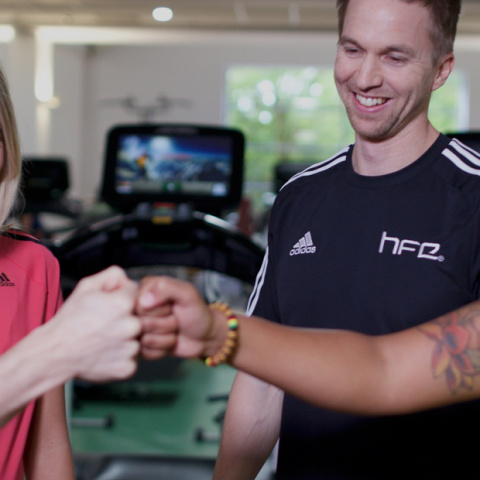When the American College of Sports Medicine’s (ACSM) survey of the top 20 predicted fitness trends for 2012 landed in our inbox, we wasted no time in thinking about how the trends could relate to UK fitness professionals. The survey, released at the end of 2011, looks at what’s hot in the health and fitness industry on a global scale. More than 2,600 fitness professionals chipped in with their opinions from the front-line of fitness. The results are interesting, but what we want to know is: how will they affect us? Here’s our response to the survey’s findings.
1. In the top spot is a trend we welcome with open arms: educated and experienced fitness professionals. It will come as no surprise to hear that we agree with this trend’s top ranking, we provide training and certification to fitness professionals, after all. With growing numbers of consumers choosing to hire trainers so they can exercise in their own homes and outdoors, as well as in conventional training settings, it’s more important than ever that fitness professional can prove their credentials. Whether you want to teach Zumba, Exercise to Music or group coaching, you must choose a certification which tells consumers you’re trained to a level they can trust.
2. Strength training remains important, occupying second place in the list of results. More and more consumers are coming to realise how beneficial weight training is, regardless of age or gender. Strength and conditioning is something every coach and personal trainer should be able to advise on, whether in a club setting or not.
3. Fitness programs for older adults is trend number three. In the UK, we are seeing a massive increase in numbers of retired people, and many of them have a healthy disposable income and a commitment to health and fitness. Fitness professionals choosing to train this demographic will need to consider how to create appropriate programmes for older clients.
4. Exercise and weight loss. At number four is something we think is integral to the industry: exercise as part of weight loss. Personal trainers would do well to educate themselves in nutrition, weight loss and fat loss (and gain relevant accreditation) in order to add this to their list of services.
5. With childhood obesity a worrying trend across the globe, it’s no surprise that children and obesity rounds up the top five. Fitness professionals are in a powerful position to help manage childhood obesity and inactivity, using their knowledge and skills to instill good habits (in both diet and exercise) for the next generation of adults. We predict that the fitness industry will make inroads into partnering with schools in order to tackle the issue proactively.
6. Personal training was a popular choice in the survey, good news for existing PTs and those looking to move into the industry. The survey says, “education, training and proper credentialing for personal trainers have become increasingly important to the health and fitness facilities that employ them”, and we’d agree, only adding that education, training and certification is important to personal training clients as well as employers.
7. Core training has been important to fitness professionals for a long time, but it seems the message is filtering down to clients at all levels. In 2012, it will be important for coaches and trainers to demonstrate a clear and extensive knowledge of core training principles, exercises and programming.
8. We were pleased to see group personal training in the top 10. It’s a trend we think will continue to grow in popularity as fitness professionals remodel their businesses in response to the economic downturn. Group personal training represents a cost-effective way for clients to use a PT, and enables the trainer to maximise their time.
9. Zumba and other dance workouts have shot straight in at number nine, and this didn’t surprise us at all. Zumba’s popularity shows no sign of waning, and we predict similar workouts will spring up in 2012.
10. Rounding out the top 10 is functional fitness, a term being used by more and more consumers. It will become increasingly important for fitness professionals to get educated and certified in skills enabling them to coach people holistically, using strength and cardio as components of programming which improve everyday activities.
The survey’s next ten trends, from 11-20, are yoga, comprehensive health promotion programming in the workplace, bootcamp, outdoor activities, reaching new markets, spinning (indoor cycling), sport-specific training, worker incentive programmes, wellness coaching and GP referrals. Casting our eye over the survey as a whole, we think there’s a clear message: that health and fitness professionals are going to have to branch out in 2012, thinking outside the gym and the studio, adding new qualifications and specialities to their skillset in order to meet the demands of a changing fitness landscape.


